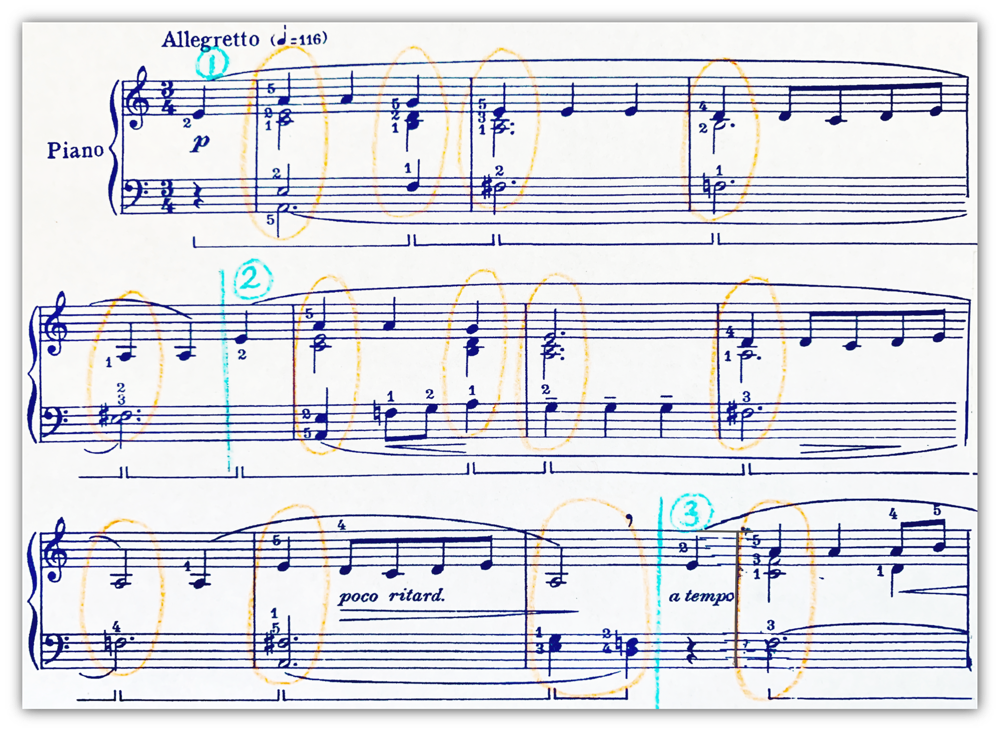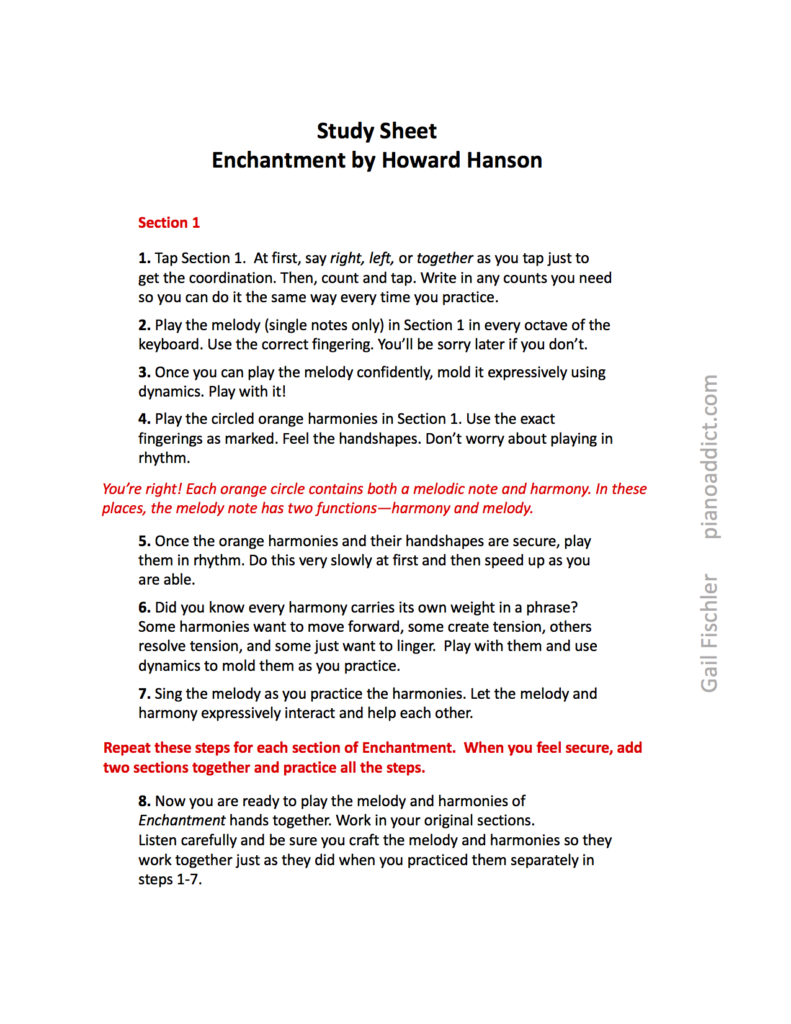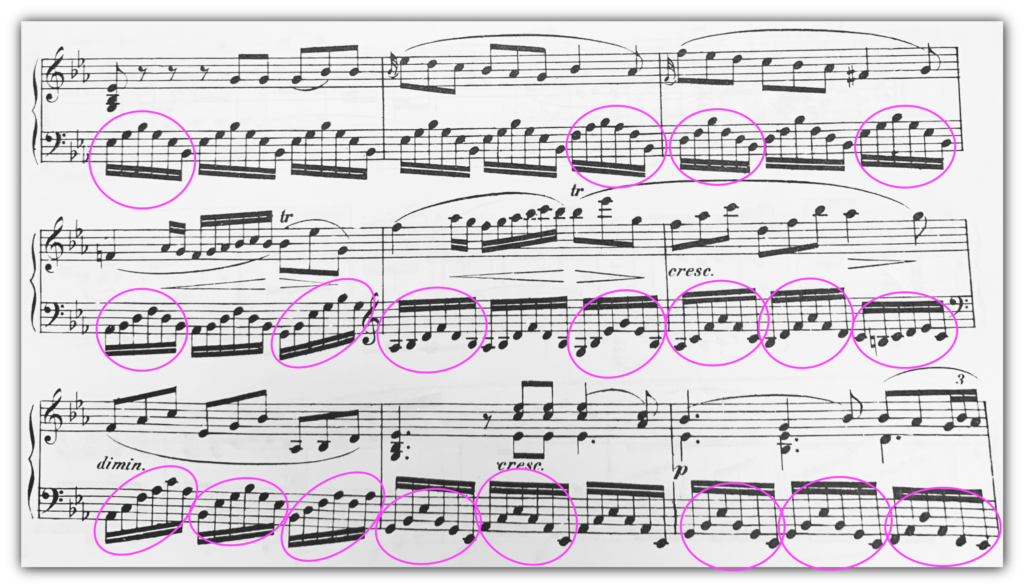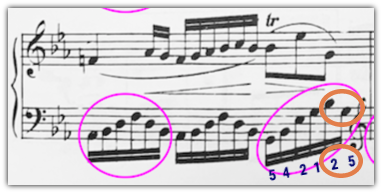Using Block Towers In Piano Practice

I love teaching intermediate students who have come back to piano after some time away or who are mostly self-taught. They are all passionate about music. Most read well, can handle melodies with accompaniments, play hymn-style in 3-4 part harmony, and identify basic chords. And, the best part—they have a thirst to improve their musical knowledge and skills.
Two skills we nearly always need to work on are practice strategies and listening skills and concepts. In this post, when I say listening, I’m not referring to intervals or basic ear training. It’s about hearing layers in music and listening to what actually comes out of the piano. I’ve shared two examples from my practice and teaching below to give you some ideas on how to solve these issues. (also a free study sheet) The first is from Howard Hanson and the second from Herr Beethoven. Click here to learn more about and purchase my Tools for Positive Practice (available singly $3 or in bundles).
The Hymn-Style Trap
The ability to play hymn-style is the undoing of many of my transfer students—especially when the accompaniment is split between the hands. They read and play vertically rather than horizontally. They are prone to thumping every “chord” and losing the melodic line completely. So, we have a couple of problems; an inability to hear layers and no practice strategies for success.
Here’s an example (from Enchantment, by Howard Hanson) illustrating how my students and I use block towers to build the skills to simultaneously listen horizontally and practice for success. I use ( Crayola Erasable Colored Pencils to mark the scores. If we decide to change a circle it doesn’t make a mess because the erasers really do a great job with absolutely no smears.

The following study sheet details the practice steps we use to successfully bring heart, mind, and body together. We do a lot of singing! Please feel free to right click the study sheet and save it, and adapt it for your use. You may not sell, publish, or claim the practice steps on the Study Sheet as your own. (I absolutely hate having to say that.)

Because Chord Pattern Extensions Happen
The second example is from the second movement of Beethoven’s Sonata Op. 79 (No. 25). This Andante is actually a lovely Barcarolle and the B section features flowing arpeggiated harmonies in extended form. I love to introduce this piece to students who are adamant that they dislike or can’t play Classical Era music. After all, despite being put in the Classical Era box, Beethoven composed some of the first romantic style compositions.

The steps to learn this section are very similar to those on the Hanson study sheet. In fact, you can model your practice plan based on those steps. Of course, these types of chord extensions are Chopin’s trademark and you can apply the same practice strategies in those, as well as a host of other compositions.
Our practice goals are to build the hand shapes and hear the harmonies interact. (see no. 6 on the study sheet) Lots of singing the melody, both on it’s own and with the blocked harmonies, is a must. Conducting and dancing are encouraged.
Most of the circled patterns can be played without finger crossings by a teen or adult. But, occasionally, in order to master the hand shapes of the patterns in this Andante we have to get creative. Here’s an example from the 4th measure of the excerpt.

In this fingering, there is a crossing during the 3rd beat. At first, students can block the entire circled harmony using two hands. Then, in order to block the part with a single hand, we divide the block so that there are two-—one for each hand shape. I let the students problem solve places like this and offer help as needed.
I hope that these two block tower practice strategies have left you inspired to kick practicing up a notch… or two… or five.



Thanks so much for the kind words and for reading!
That’s really informative post. I appreciate your skills. Thanks for sharing.
Andrea thank you so much! I’m so glad you find the blog helpful. Blushing…
There is no musical instrument more beautiful than the piano. I learned online before taking courses with a great teacher like you. It not only increased my confidence but my self-esteem. I now play at our local church and have played at many weddings. I love reading your blog. It inspires me and reminds me why I love piano in the first place. Thank you!